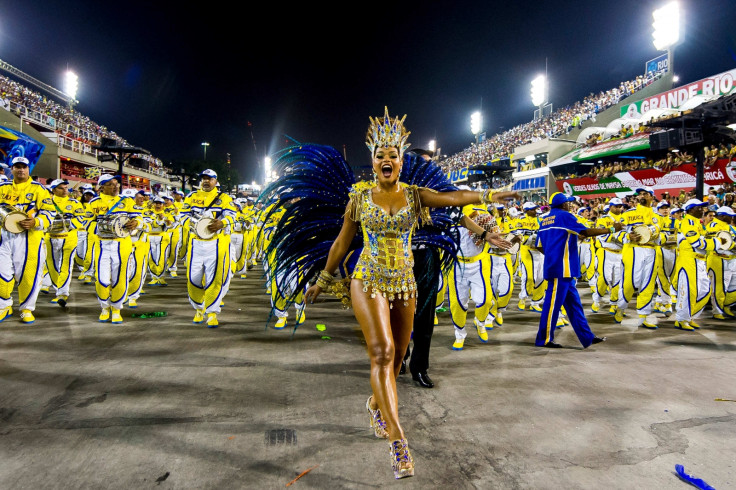Rio de Janeiro Carnival 2015: A short history of the world's biggest street carnival

The world famous carnival in Brazil's Rio de Janeiro is set to begin on Friday (13 February), bringing five days of glittering costumes, music and samba. With two million people a day flocking to the festival, it is considered the biggest carnival in the world.
The parade of samba schools – clubs of performers – will take place in the Sambadrome, while other events will be held at Copacabana Palace and beach. Bandas and blocos, street bands, will perform at the street festivals that take place during the carnival around the city.
The first record of the celebration dates back to 1723, when Portuguese immigrants from the islands of Açores, Madeira and Cabo Verde introduced the Entrudo, the carnival. Far from the glamour of the modern-day carnival, water and food was thrown which created street brawls and riots amongst the music and dancing.

19<sup>th century
Throughout the 1800s, the festival become more organised with parades such as the "Grandes Sociedades", in which the Emperor – the Empire of Brazil remained a constitutional monarchy until 1889 – would join in the celebrations with other aristocrats and luxurious costumes.
In the 1840s, masquerade balls became popular within the carnival, set to waltzes and polkas. Ten years later, street parades with horse-drawn floats and military bands became the focal point of the Rio carnival – in a similar fashion to the modern floats and samba schools.
Moving away from the aristocratic era of the carnival, the celebration became increasingly working class towards the end of the 19<sup>th century. The festival became a form of expressing political dissatisfaction during the years of military censorship – with ironic performances to protest against the government and promote the public's desire for freedom.
The rhythms of the samba, the most famous dance performed at the carnival, were passed from Afro-Brazilians to the impoverished slums after the abolition of slavery in 1888. It wasn't until around 1917, however, that the samba became an integral part of the Rio carnival.

Samba Schools
The modern Rio carnival consists of more than 200 samba schools, composed of groups of local neighbours who want to attend the carnival together. Each school has to follow a special order with their parade entries, with choreographed dances in colourful costumes that tell stories.
Each school begins with the "comissão de frente", meaning "Commission of the Front", that is the "wing" or group of people from the school that appear first.
The first samba school to be formed in 1928 was the Grêmio Recreativo Escola de Samba Mangueira – known as Mangueira - one of the most traditional and best supported Samba schools in Rio de Janeiro.
As theme songs and elaborate costumes became the main attraction of the carnival, other schools began to form to take part and the samba parade soon became the most popular element of the festival. A time limit for each team was organised in 1971 and the main streets of Rio were the stage until 1984, when architect Oscar Niemeyer designed the Sambadrome.
© Copyright IBTimes 2025. All rights reserved.






















